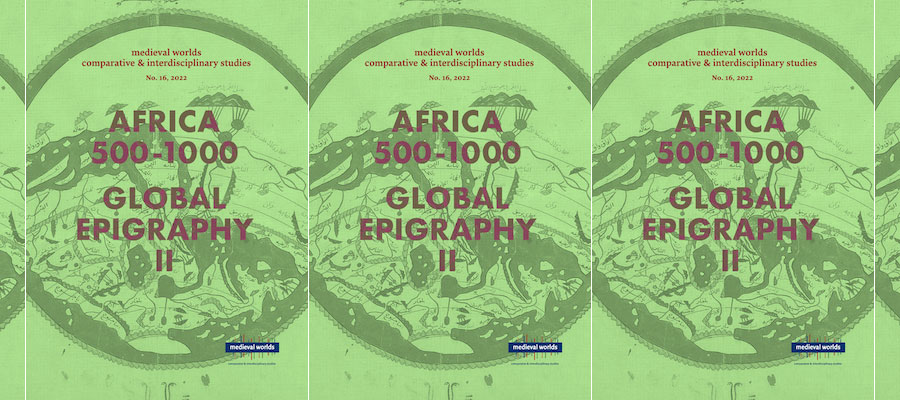Roland Steinacher, Paolo Tedesco, and Philipp Margreiter, eds., "Africa 500-1000. New Perspectives for Historical and Archaeological Research," and Andreas Rhoby, ed., Global Epigraphy, II. Perception and Representation of the Foreign. Special issue, medieval worlds, volume 16 (2022). [Open access]
CONTENT INCLUDE
A Subaltern’s View of Early Byzantine Africa?: Reading Corippus as History
Andy Merrills
Corippus’ Iohannis is both the last classical epic poem to be written in Latin, and a major historical source for the early Byzantine occupation of North Africa (c. 533-551). The poem has conventionally been viewed as an uncritical celebration of the imperial occupation, thanks to its classicizing imagery and the panegyric aspects of its narrative of recent military successes. The present paper argues that this was tempered with a more critical retelling of the first fifteen years of the Byzantine occupation. This is presented in a metadiegetic analepsis (“flashback”), in the voice of an African officer in the imperial army of occupation. It is suggested that the catalogue of disasters presented here – internecine warfare, social upheaval, and plague – reflect the ambivalent attitude of contemporary Africans to the occupation itself.
“Foreign(er)”, “Strange(r)” and “Extraordinary”: xenos and its Meanings in Byzantine (Metrical) Inscriptions
Andreas Rhoby
The use of the term xenos (ξένος) has a very long tradition in the Greek language. First used in Homer’s epics, it can have various meanings. Basically, the word means “foreigner”/ “stranger” but it also designates the “guest-friend”. As early as in Aeschylus, the adjective denotes “foreign” in the sense of “extraordinary”/“unusual”. The term xenos is also employed in inscriptions. The most famous ancient inscription using xenos is transmitted in Herodotus; it is the well-known address to the wandering stranger who is asked to tell the people in Sparta that he has seen the fallen Lacedaemonians at the Thermopylae. In late antique and Byzantine inscriptions (as well as in literary texts) the address xene is very often employed in (metrical) epitaphs. As in the famous Thermopylae epigram, the xenos is asked to stop, to have a look at the tomb and think of the deceased. Two further meanings of xenos are used very often in Byzantine metrical inscriptions: xenos (and its female form xene) is a very common term for monks (and nuns); they have escaped the worldly life and are xenoi on earth. In many cases xenos is employed in the sense of “extraordinary”/“unusual”; this is especially true for the description of buildings and various objects to which the inscriptions are attached but, e.g., also for inscriptions on reliquaries in order to describe a saint’s qualities. In this contribution, I will describe the various meanings of xenos from Antiquity onward with a specific focus on Byzantine metrical inscriptions.
